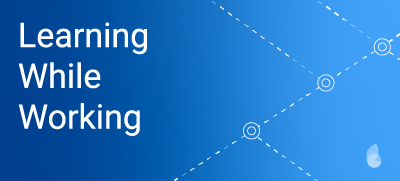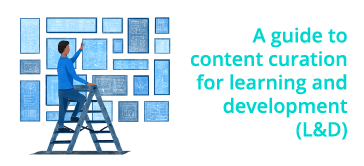Content curation needs to be more than just collecting

Content curation was one of the buzz terms at the recent Melbourne Learning Cafe Unconference. The basic premise of content curation for learning is that all the information a learner needs exists on intranets or on the wider internet BUT it is hard to find. Content curation is about bringing together that information into a central place.
In higher education it’s a pretty common approach because the knowledge base exists in places such as online journals.
What we have learned about content curation
After listening to the conversations at Learning Cafe Unconference I thought it would be interesting to share the journey and learning experience with content curation that one of our clients has had over the last few years.
Our project with Tropical Medical Training began with a review of their existing course. What they discovered was that GP registrars (doctors in General Practice training) found the resources and links in the course to be most valuable; the nature of knowledge in medical education means it is constantly changing and most of the reference material exists on the internet.
A portal of resources called tmttopics was built, organised around 96 topics arranged in three levels. Essential topics are those that the GP registrars need to know in the first six months; the other two levels were deemed Intermediate and Subsequent. So the content library includes some suggested sequencing for how the learner should explore it. Each topic includes links to the key resources for that topic area. Each resource is tagged with keywords and all of it is searchable.

The portal was built with Glasshouse
Content is not learning
What everyone involved in the project learned is that content is not learning. Most learners in medical education (and in many other professional jobs) really struggle with knowing exactly what they need to know and what they need to be able to do in the early stages of their career. tmttopics is still a bit of a maze of resources. What the learners were asking is "What exactly do I need to DO?" One of the frameworks Sprout Labs uses is Ron Oliver and Jan Herrington’s learning design approach, which divides learning experiences into tasks, support and resources (most approaches to content curation focus merely on resources).
The next stage of Tropical Medical Training’s journey was to develop subject guides for some of the topics. These included:
-
learning outcomes to give the learners strong guidance about what they need to do
-
a single key resource for each of these learning outcomes
-
discussion points about the topics that could be used in coaching or small group learning sessions that happen in the workplace.
Adding these subject guides means that portals now give the learners more context, tasks can then be added, and the discussions ideas are presented as a type of support.
What’s next for the project?
1. Learner-generated content
When the portal was being designed there was some discussion about enabling the learner to add and rate resources. At the time it felt like the learners were extremely busy and they wouldn’t be interested in doing this. But now, after it’s been running for a while, it is one of the most common requests. I feel this is part of a deep change in how people expect learning resources to work. Social media means we are now all creators and publishers, and learners are expecting the same thing from their learner experiences.
2. Adaptive learning approaches
Tropical Medical Training has developed an amazing set of resources. They also have access to a bank of assessments that could be used to diagnose where a learner's skills and knowledge are weak, and for learners to be able to practise exam questions over time. This would work like this ...

For me the key learning with this project has been that content curation approaches to learning need to be more than just a collections of resources. Meaningful learning tasks and social learning experiences need to be designed around the resources.

